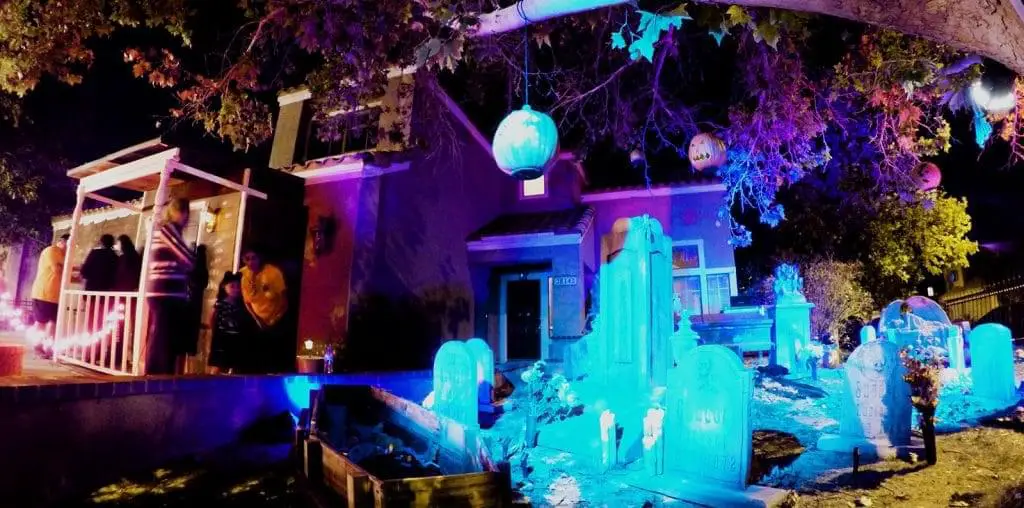
The peculiarity of Uncle Boonmee Who Can Recall His Past Lives might be best conveyed by a single moment: a woman who has been dead for nineteen years leans across the table to her son—now a Sasquatch-like creature with black fur and glowing red eyes—to tell him that “earthly matters never cease to surprise.” The strangeness is not so much in the statement itself but in the fact that, given the moment, it seems to be the only sensible thing to say. Huay and Boonsong—the woman and her son, respectively—are not entirely of this world, nor are they wholly separate from it. The same can be said for this film, one in which the above statement comes as naturally as another in which a woman remarks on the size of a squash; in which the dead are as much a part of the cultural fabric as the living; in which an aging princess copulates with a mythical talking catfish to restore her former beauty. This movie is many things but, perhaps most importantly, it’s seamless in the way it vacillates between its component parts. The result is something akin to a puzzle with more pieces than can be counted, and watching it is like an exercise in perspectivism: so many different interpretations can be applied to it (each as valid as it is ultimately insufficient) that the act of interpretation itself begins to feel like a fool’s errand.
Apichatpong Weerasethakul’s Uncle Boonmee Who Can Recall His Past Lives is anticipated by his 2004 feature Tropical Malady. “Remember my uncle who can recall his past lives?” one man asks another as they sit under a canopy in the jungle together. It amounts to little more than a passing reference, but the fact that it’s spoken at all—and by the same actor who plays Boonmee’s nephew in this film, no less—establishes the complementary nature of these two stories. Uncle Boonmee has much in common with Malady—same locale, same dream logic, same folkloric air—but where Malady baffles, Uncle Boonmee enthralls. It takes the qualities that color its spiritual predecessor and turns them into something more fully realized while still leaving much of its latent meaning incorporeal. The two are of the same whole, and yet it’s clear after having seen both that much of it remains to be seen and heard. Meaning doesn’t reveal itself in these films; it accumulates.
Huay and Boonsong are also the wife and son of Boonmee himself. A honeybee-farmer meandering through his last earthly days with a mixture of acceptance and fear, Boonmee comes to learn that, in addition to his wife and child, other such spirits have been beckoned by his illness. Weerasethakul’s cinematic world is one rife with physical and spiritual transformation, and this film’s namesake is aided through his journey by loved ones who are further along in theirs. Boonmee’s prolonged death is that of a man mostly unafraid to die, save for lingering questions of his own karma. A door is thus opened, if only slightly, onto what Weerasethakul might be getting at here: our lives are not closed circles, he seems to be saying, and what we do in one life resonates in the next. When asked how Boonmee should find her in heaven after he passes out of this world, Huay dismisses such a notion because “ghosts aren’t attached to places, but to people.” Her presence proves a comfort to Boonmee, and it’s not long before he comes to understand her arrival as an almost ceremonial preparation for his own passing.
Near the end, Boonmee and his family walk through the jungle, where they find the cave in which he says he was born in his first life. Once there, Boonmee launches into a monologue—his last—describing a recent dream. His metaphysical journey has taken him, at least this once, not into the past, but the future. As he relates his vision in a manner similar to Boonsong’s description of how he came into his current form, the images we see stop moving; it is as if we are seeing a slideshow projection of Boonmee’s dream. For the briefest of moments, Uncle Boonmee takes a cue from La jetée and shows us a troubling future made all the more frightening by its plausibility. This is Weerasethakul at his most overt, and yet, sociopolitical implications aside, Uncle Boonmee is more timeless than it is ‘of its time.’ Rather than attempt to capture the zeitgeist in the same manner as, say, The Social Network, Weerasethakul waves his net at something larger, knowing fully well that it isn’t something that can truly be caught: how we might be more than one thing at once, even in death. And though it does indeed capture the essence of its setting, it is a story that could—and, to a certain extent, does—take place anywhere and at anytime. Consider, for instance, the opening scene, in which a young man chases after a water buffalo. Is this one of Boonmee’s past lives and, if so, is he the man or the buffalo? Or is the elusiveness of the large creature merely a stand-in for our quest for meaning, both in film and in life? Weerasethakul provides no explicit answers, nor does he need to: Uncle Boonmee is a film to be experienced for its immediacy and thought upon for its ineffability.
Weerasethakul’s film is as strange a beast as those who inhabit it. To walk alongside it is to enter a cave into which you haven’t been invited, but being compelled to stay by the need to watch for whatever foreboding, wondrous thing you might catch a glimpse of next.
